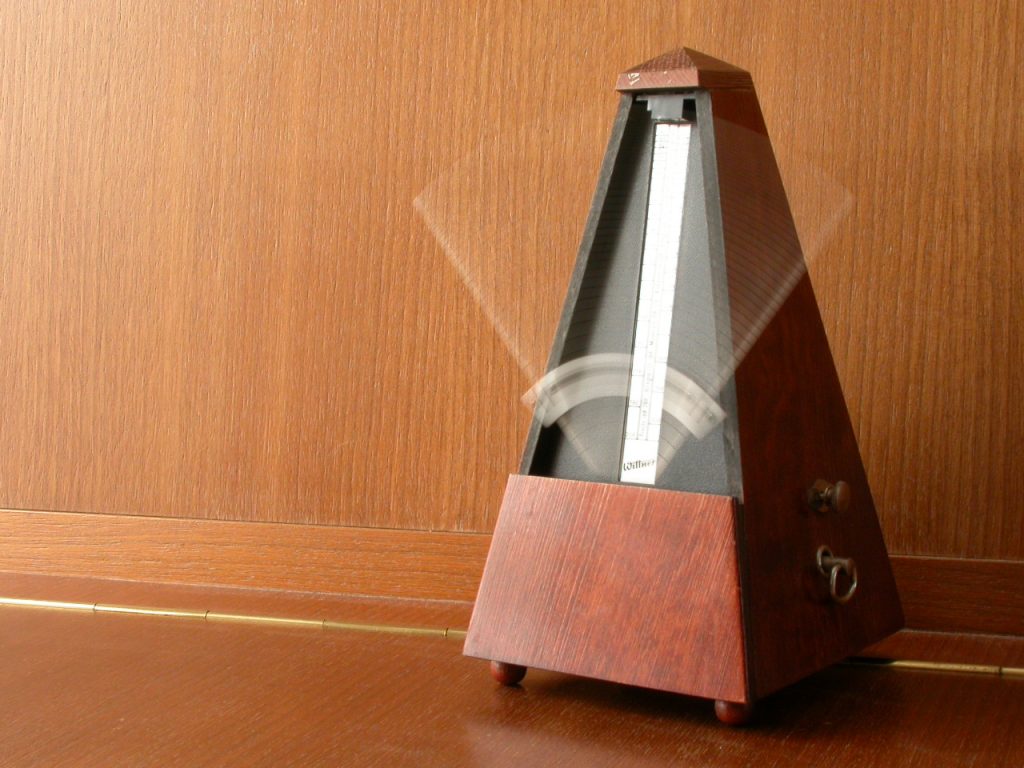How to Use a Metronome to Learn a Reel

In Scottish country dancing, the reel is one of the four traditional dances, the others being the jig, the strathspey and the waltz. A reel is in 4/4 time, but when written out, reels are most often written in a 2/2 time signature, also known as "cut time".
In cut time, there are two beats in a bar instead of four, which simply emphasizes the beats in a different way. Reels can be two or four parted tunes, and each part is typically repeated.
When you are learning a new reel, do you often have trouble playing the correct rhythm, or have trouble staying “on the beat”? There may be several reasons for the problem if this describes you, but using a metronome as you learn a reel may be just what you need.
This article follows on previous ones that describe how to use a metronome in general, with a jig and 2/4 march. As we mentioned in those posts, the metronome is a highly accurate and useful tool that can vastly improve our rhythmic accuracy and musicality. Yes, it is also an unrelenting truth detector. This article continues along the path of how to approach using a metronome to improve our playing, but this time with a reel. Figure 1 shows the first line of a well-known reel, "Captain Lachlan MacPhail of Tiree," composed by Peter Farquhar.

The monotone rhythm of a reel is typically vocalized by singing “one-ee-and-a”, “two-ee-and-a” for each bar. Thus, the “one” and “two” occur on each downbeat, while the “and” occurs on each offbeat. A solid plan in learning a new reel is to use the metronome in double-time, wherein each beat and offbeat get a “click”. See Figure 2.

Set the metronome at a reasonable tempo, say 70 bpm, so that you can play each gracenote and embellishment correctly and with dead-on rhythm. Note that a tempo of 70 bpm in double time is, in reality, a single time tempo of only 35 bpm. At first, do not attempt to play the entire line, but instead play only the first bar, beginning on the Low A of the first bar, and ending on the first F# in the second bar. Remember, always begin and end on a downbeat when you are playing snippets of a tune. Play the first bar at least five times, and correctly, before moving to the next bar. We know that we should play no faster than we are capable of playing all the notes and embellishments correctly, despite our impatient intuition to play faster! Learn it slowly and correctly early, and things will go well; learn it incorrectly at first, and you’ll waste valuable time trying to clean things up later, especially for adult learners. Slow is good.
After you are quite comfortable playing the entire tune in double time and with the correct rhythm, now go to single time. Set the metronome to 35 or 40 bpm, since now only the two downbeats in each bar get a “click”. See Figure 3.

As you continue to learn this tune, gradually increase the tempo. Since most pipers, unfortunately, play ahead of the beat, be patient and wait for the “click” to play the downbeat. The High G gracenote to Low A, for example, in the first bar should totally eclipse the click of the metronome, as should the High G gracenote in the E doubling
Through frequent use of a metronome, you will find that your ability to play on the beat vastly improves, and along with that rhythmic accuracy will come markedly improved musicality.



Responses